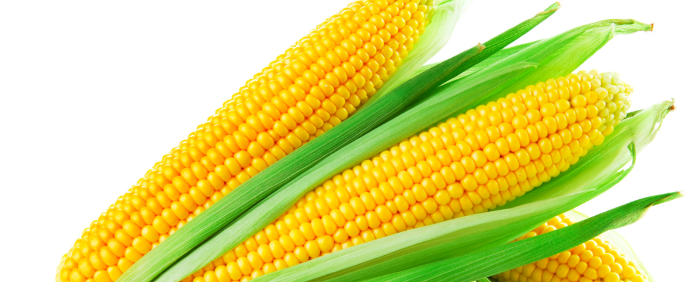
Crunchy and juicy, what a treat that sweet corn! It is consumed in France since the 1970s, canned or frozen. It is also consumed as our American friends grilled corn. It is obtained from varieties selected and crossed specially for human consumption.
A vegetable more and more sweet
Sweet corn brings together special varieties , in which glucose does not turn into starch too quickly. These are recessive genes that regulate this peculiarity; the sweet corn crop must be isolated from the maize crop for the animals so that there are no untimely crosses . There are several kinds of sweet corn: the normal or standard, the “super sweet” and even the United States the new “triple sweet” … each variety being sweeter than the previous one.
To each his preference
In Western Europe, the consumer prefers the “super sweet” while the Eastern Europeans stay on the standard. The “super sweet” and “triple sweet” are typically the result of the genetic improvement of sweet corn, to completely meet the tastes of different countries. They correspond to crossbreeds of varieties .
Since the world’s cultivated areas are not very important, for historical and mean reasons, all the varietal creation is done in the United States. The new varieties are tested very early in France, for at least 3 to 4 years before the marketing of the varieties. The main selection criterion is yield and disease tolerance of maize. Of course, the grains must be healthy.
Tastes evolve, the breeder responds
For the improvement of varieties , canned and frozen industrialists and breeders work in partnership. The industrialists follow consumer panels that test the varieties: do we want more crunchy, crunchier, juicier grains, bigger or smaller, of a stronger yellow, more brilliant? All these criteria interact with each other and the sensation of pleasant sweet taste does not depend only on the sugar content. Intervenes the juice content, the fineness of the grain envelope … The breeder to find the right balance.
Qualities that are preserved
The varieties are also tested to ensure that canning is to say, the heat sterilization, does not alter their qualities or color. Because the food industry has its own requirements. The maize must have a very cylindrical shape, with well-aligned and regular grains, to extract the maximum of grains. Thanks to the selection work, we now have a wide range of varieties with varied precociousness, to spread the crops and the supply of the plant.
The grain is processed very quickly, within 3-4 hours after harvest. “Super sweet” varieties are preferred because they avoid adding sugar. The level of sugar also depends on the date of harvest and maturity of the grain.
French sweet corn is exported well
The climate of south-west France is very favourable to the cultivation of sweetcorn, mainly in Aquitaine. Thanks to the varietal improvement, sweet corn is also possible in the Center. Quality product, it is almost entirely exported in appertised form, especially to Northern Europe. Because if sweet corn is the fourth vegetable consumed canned in France, its overall consumption remains quite low: 1kg / year / inhabitant against more than 10 kg / year / inhabitant in the United States and Canada! But fresh corn (on the cob) is beginning to seduce the French, especially in the big cities.
The composition of sweet corn
Sweet corn, Zea mays saccharata, belongs to the same family as grain corn. It differs in composition because it has one or more genes that slow down the conversion of carbohydrates into starch. It is harvested when its water content is around 70%. It is rich in carbohydrates, fiber and vitamins, especially of group B.
Average levels of sweetcorn:
- Water : 70% – By comparison, fresh vegetables : 90-95% Kilocalories / 100 g net: 96 Kcal
- Carbohydrates in% of the total weight: 18% (of which more than half in sucrose) – fresh vegetables: 2 to 4%
- Fibers : 4%
- Proteins : 3.3%
- Fat : 1.2 g / 100 g – essential fatty acids – fresh vegetables: 0.1 to 0.2 g / 100g
- Vitamins : B1 – B2 – B3 – B5 – B6 – B9: 2 to 3 times more than in fresh vegetables, C – E
- Minerals : 800 mg / 100 g of which 270 of potassium, 100 of phosphorus and 33 of magnesium
- Trace elements : manganese, molybdenum, copper, nickel, iodine, selenium